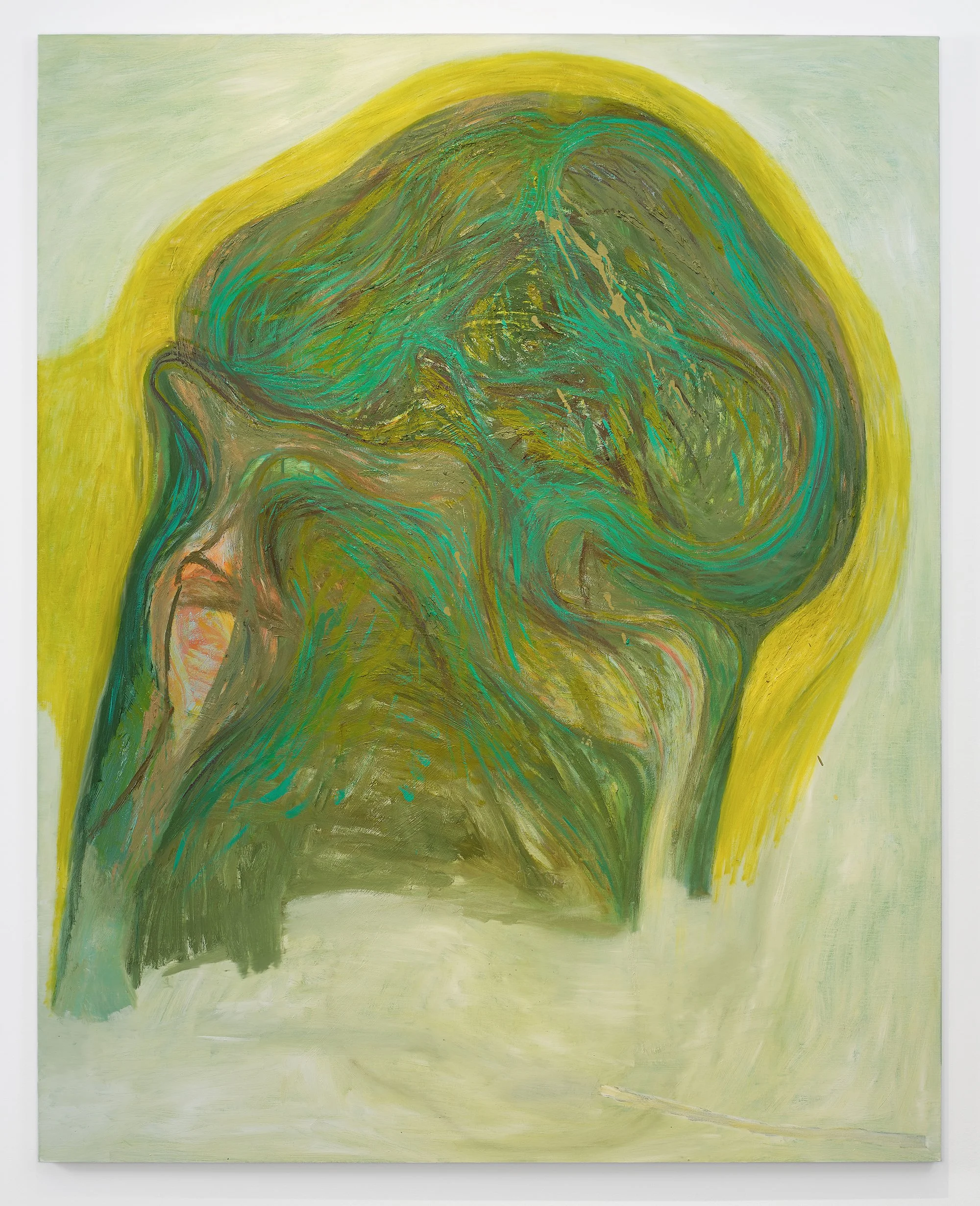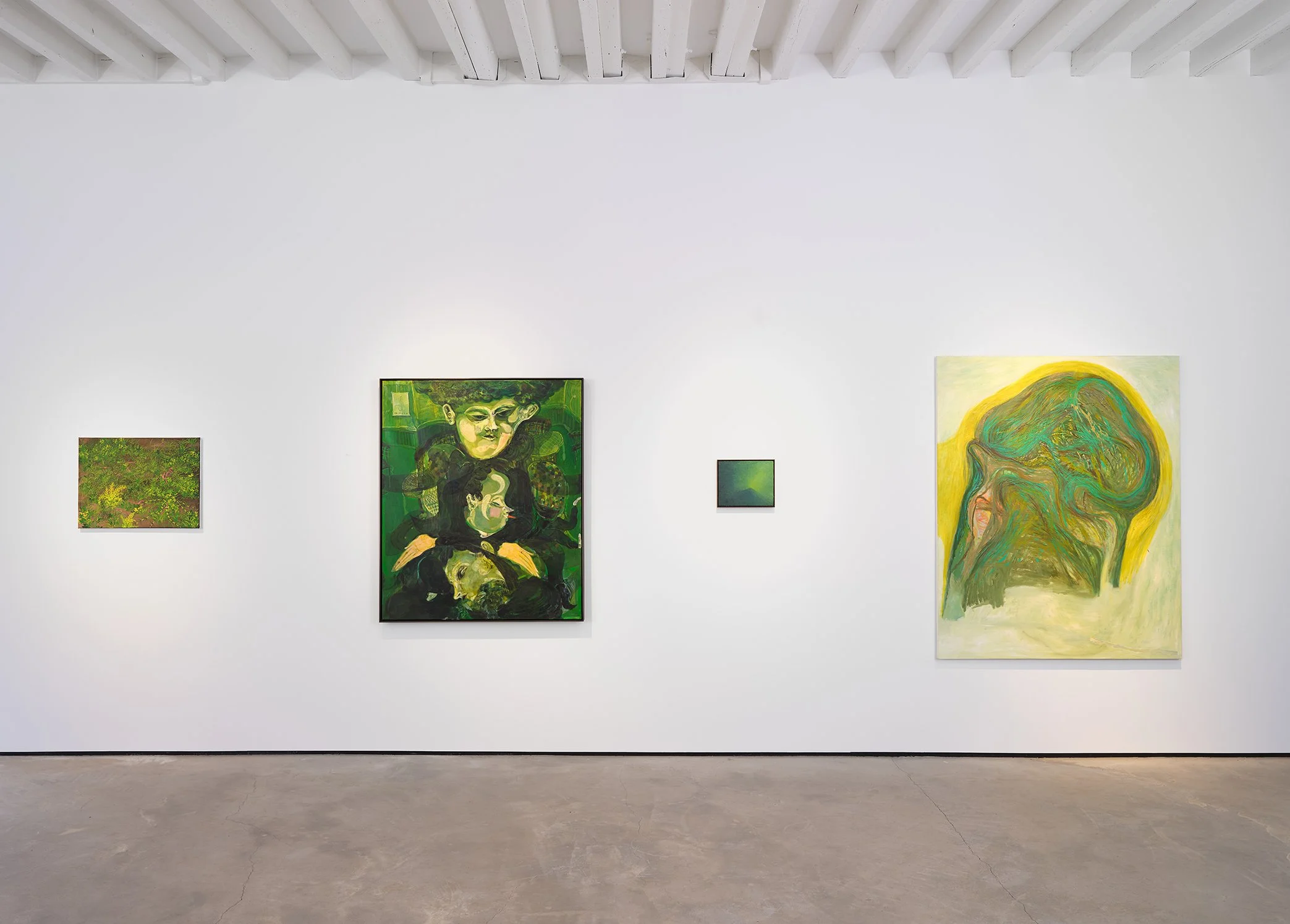Greenhouse
Maximilian Arnold, Guglielmo Castelli, Brice Guilbert, Brook Hsu, Calvin Marcus, Sarah Schlesinger, Wang Shui, Josh Smith, Sylvia Snowden, Andy Warhol and Randy Wray
Gratin, New York, NY, February 9 - March 10, 2023
Discovery, 2015–2017, oil on linen, 60 x 48 inches
Installation view
Gratin is pleased to present its first group show, Greenhouse.
The expressive and symbolic energies of green are examined in Greenhouse, a wide-ranging group exhibition at Gratin, which spans from Pop Art to post-humanist meditations on the new age. Think: nature, money, envy, and so on... The color carries a bevy of political and cultural implications depending on its context and tonality. They say a green painting is less desirable than one accomplished in, say, red: The Green Problem. The paintings assembled here each make a case for the viability of a verdant palette, the artists working in opposition to presupposed constraints of green.
Childhood memory manifests itself in Brice Guilbert’s ongoing “Fournez” series, as the artist composes idiosyncratic pictures of his native Réunion island. In this new iteration, electric greens dance against a deep turquoise, simultaneously evoking the sea’s depths and the exuberance of sunlight refracting against its surface. Synergistic color decisions are also constant in Guglielmo Castelli’s oeuvre, the artist declaring that the “chromatic temperature occurs to [him] by chance.” Scissor confronts the viewer with knotted figures set within the confines of a warped space, conjuring the decorative interiors of Édouard Vuillard with their diverse patterning and rejection of traditional perspective. Hanging on its own wall nearby, Brook Hsu’s tangled linework all but obscures a pale blue female form. The figure appears as a contemporary update of Manet’s Olympia, though it lacks any explicit details. Hsu’s signature spiral is reiterated all over Vive l'Amour’s surface, ensnared by her variable shades of green.
In an untitled collage from 2008, Josh Smith has adorned a large panel with jumbled materials. The composition’s left edge is interrupted by a form resembling the Washington Monument swaying in an abyss of verdant smoke. Sarah Schlesinger’s work also tends to thwart any straightforward perception, brushing up against geometric abstraction, yet pushing through and beyond the genre into naturalist territories. From afar, one is unable to see the actual minutiae of the artist’s compositions, but close inspection opens them up to the natural world that they emerge from. Nearby, Calvin Marcus’s untitled painting illustrates a dense patch of grass decorated with a splash of clovers. The composition, while bolstering a cartoonish realism, implies an alternative mode of representation with its abstract expanse of linework. The grassy thicket is accomplished in a concise medley of greens, with patches of soil peeking out from beyond. Both Marcus and Schlesinger touch base with green under vegetative circumstances, bringing forth its environmental associations.
Sylvia Snowden once described her subject matter as twofold: “my emotional self gets exhausted with the figures and then I go to the non-figure” and, after reaching the point of exhaustion once more, “I’ll go back to the figure.” Green III, one of her non-figural packed with laboriously applied layers of paint, which are characteristic of a practice that she defines as structural abstract expressionism. Randy Wray also works within and against competing sensibilities, generating inexplicable forms governed by the artist’s intuitive process. Discovery introduces a revelatory application of paint recalling Joan Mitchell’s scratch-like abstractions as Wray continues to submit to his intuitive process. Beyond an amorphous mass largely composed of mustard, olive, and peach pigments, Wray has applied a minty wash to the canvas. The color situation here contributes to a sense of naturalism, both soothing and repulsive.
Reveling in the ambivalence of definition, Maximilian Arnold offers a painted universe populated by his extensive archive of images. Additions and subtracts are made with everyday objects, his erasures specifically referencing the diminishing attention span of our technological age and man’s limited cognitive storage. His new painting revolves around a contorted figure rendered in a synthetic shade of green, reinforcing the composition’s uneasy depiction of space. Multimedia artist Wang Shui is also directly attuned to the impacts of the post-human landscape, describing their expansive practice as a “recursive feedback loop.” After feeding older paintings into algorithmic programs, they inscribe the generated iterations on aluminum surfaces. The image on the present aluminum is accomplished by rubbing and scraping, with inflections of green dotting the edges of Wang Shui’s interventions. Andy Warhol’s Two Dollar Bill appears liquidated of color. The dollar bill was the first subject of his photographic silkscreen canvases, which went on to include hibiscus blossoms, Campbell’s soup cans, and Marilyn Monroe’s likeness. Shortly after the silkscreens were inaugurated, Warhol confessed, “the reason I’m painting this way is that I want to be a machine.”
Greenhouse brings a specific collection of artists together in order to celebrate the promise of this chromatic framework. Perhaps it’s not that easy being green, but the rewards for engaging with the color are clearly demonstrated here.

